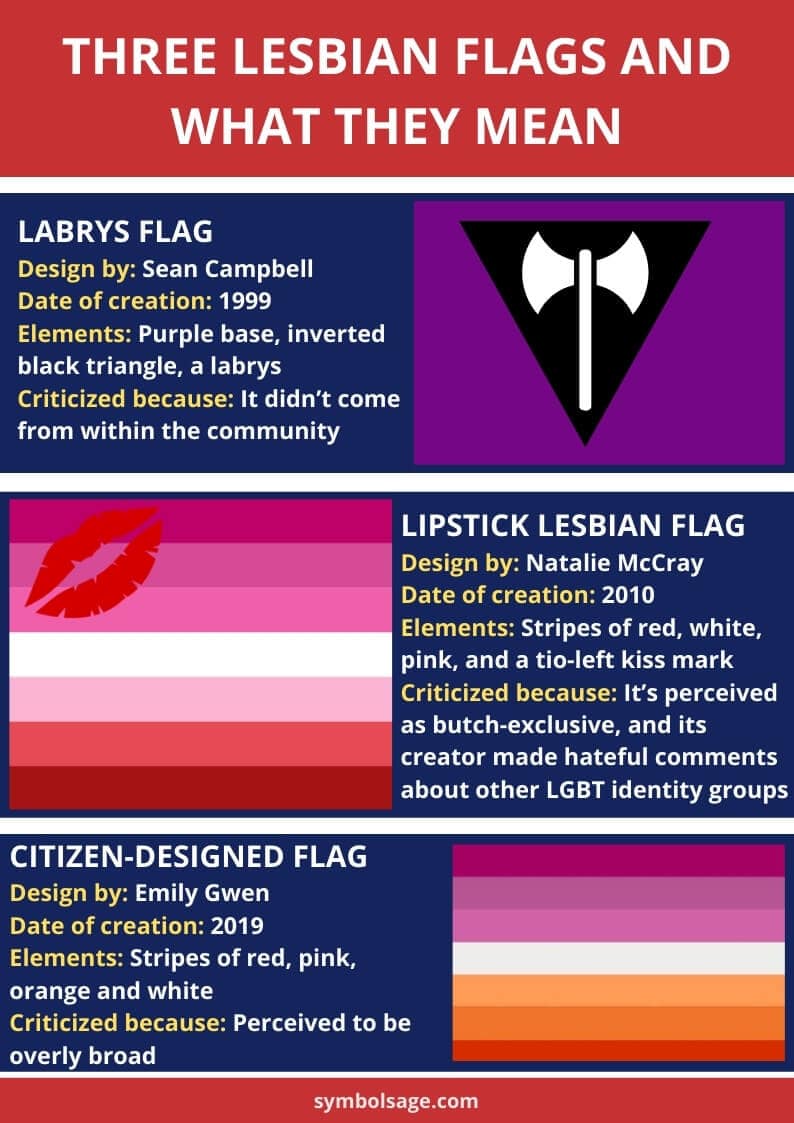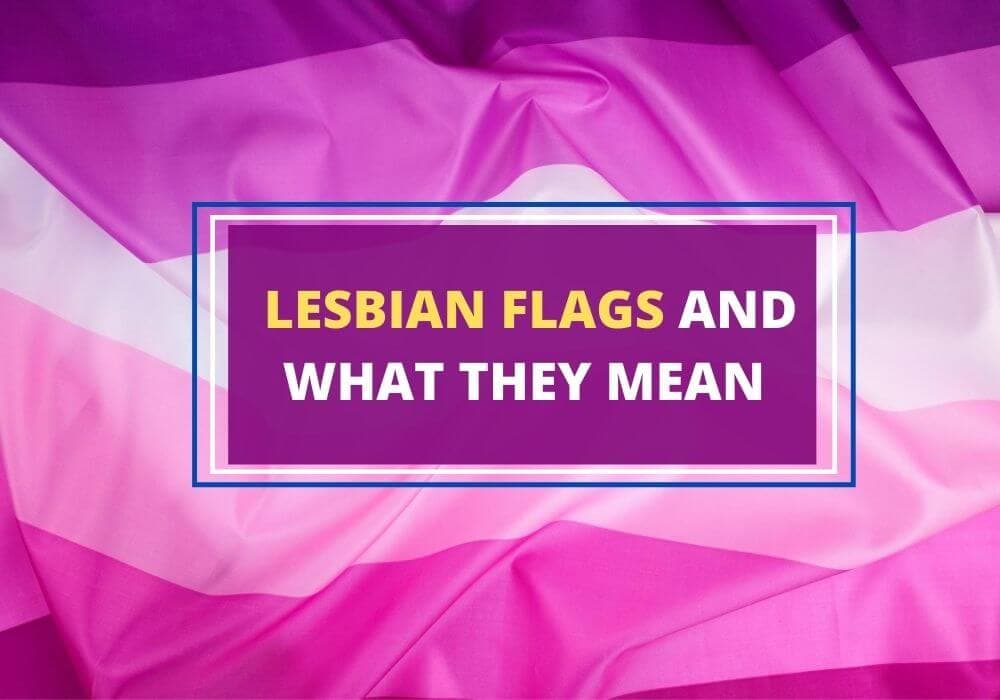
Table of Contents
Most sexual identity groups under the broad LGBTQ+ banner have their own officially recognized flags, but the same can’t be said for the lesbian community. There have been attempts to design an ‘official’ lesbian flag over the years, but unfortunately, each attempt was met with backlash from no other than actual members of the identity group.
In this article, let’s take a look at three of the most recognized and widely criticized lesbian flags in existence, and why some members of the lesbian community do not identify with them.
Labrys Flag
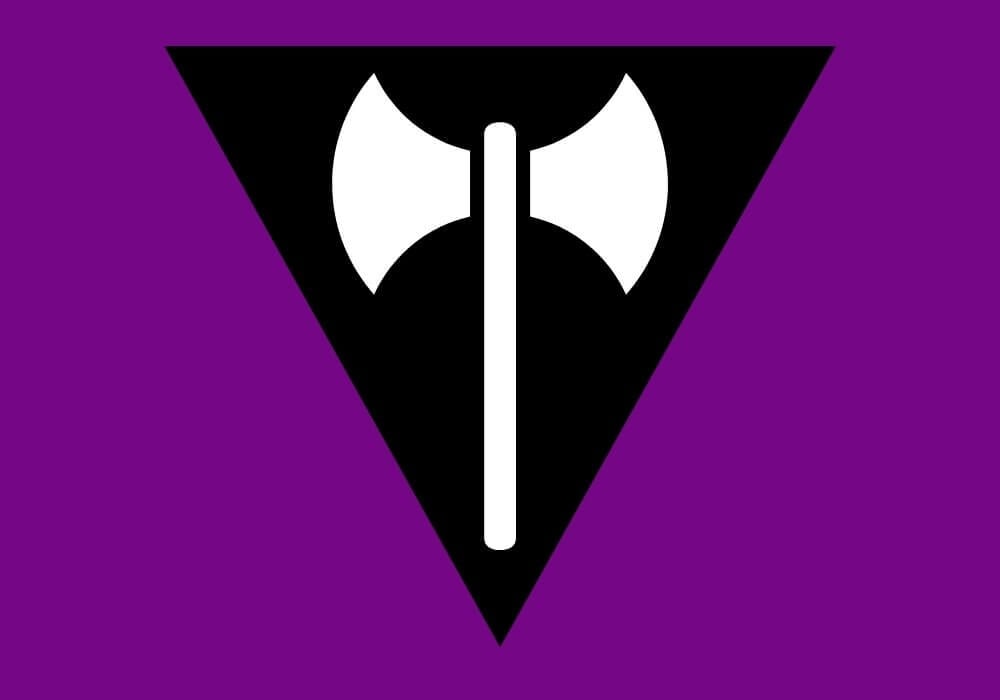
- Design by: Sean Campbell
- Date of creation: 1999
- Elements: Purple base, inverted black triangle, a labrys
- Criticized because: It didn’t come from within the community
Campbell, a homosexual male graphic designer, came up with this design while working on a special Pride edition of the Palm Springs Gay and Lesbian Times, which was published in 2000.
The purple background is a nod to lavenders and violets being used in history and literature as a euphemism for homosexuality, which began when Abraham Lincoln’s biographer channeled the poetry of Sappho in describing the former president’s intimate male friendships as spots soft as May violets, and friendships containing a streak of lavender.
Right smack in the middle of the purple flag is an inverted black triangle, which is a reclamation of the symbol used by Nazis in their concentration camps to identify homosexuals.
Finally, the most iconic part of this particular flag: the labrys, a double-headed axe that finds roots in Crete mythology as a weapon that only accompanies women warriors (Amazons) and not male gods. The ancient symbol of matriarchal power was adopted by lesbians, who, according to gay studies expert Rachel Poulson, valued the example of Amazons as strong, brave, women-identified women.
Strong imagery aside, some members of the lesbian community found it difficult to relate to a flag created by someone who is not only from outside the identity group but is also a man. Representation is a big deal for members of the LGBT community, so others felt like if an official lesbian flag would exist, it should have been made by a lesbian.
Lipstick Lesbian Flag
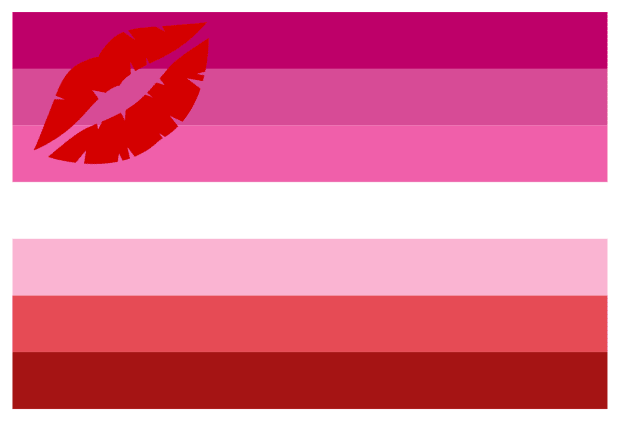
- Design by: Natalie McCray
- Date of creation: 2010
- Elements: Stripes of red, white, several shades of pink, and a pink kiss mark on the top left
- Criticized because: It’s perceived as butch-exclusive, and its creator made hateful comments about other LGBT identity groups
First published on McCray’s The Lesbian Life blog in 2010, this flag represents a particular sub-community composed of lipstick lesbians – women who celebrate their femininity by wearing traditional ‘girl clothes’ and sporting makeup.
McCray got quite literal with the imagery of this flag. The stripes represent various shades of lipstick, and the huge kiss mark on the top left is pretty self-explanatory.
However, this may just be the most frowned-upon lesbian flag, especially for LGBT members who value intersectionality and solidarity with other identity groups and minority sects. For starters, the lipstick lesbian flag innately excludes ‘butch lesbians’ or those who have completely abandoned traditional ‘girl’ clothes and attributes.
Within the lesbian community, lipstick lesbians are considered to be in a privileged position because they usually pass as straight women, and can, therefore, evade those who persecute and discriminate against those who are openly gay. Therefore, having a flag dedicated solely to lipstick lesbians seemed to be an additional affront to the butch community.
Furthermore, designer McCray was said to have posted racist, biphobic, and transphobic comments in her now-deleted blog. Even a later iteration of this lesbian flag – the one that doesn’t have the gigantic kiss mark on the top left – did not gain much traction because of this convoluted history.
Citizen-Designed Lesbian Flag
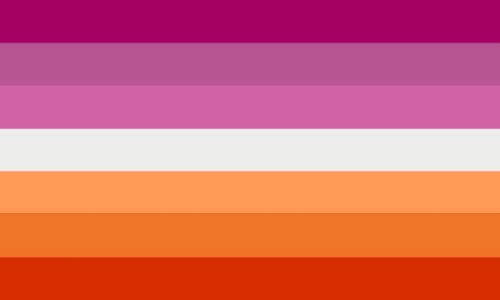
- Design by: Emily Gwen
- Date of creation: 2019
- Elements: Stripes of red, pink, orange, and white
- Criticized because: It’s perceived to be overly broad
The most recent iteration of the lesbian flag is also the one that has received the least criticism so far.
Designed and shared by Twitter user Emily Gwen, it’s touted by some as the most inclusive lesbian flag in existence. It has no other elements in it other than seven stripes, much like the original rainbow Pride flag.
According to the creator, each color represents a specific trait or characteristic that is generally valued by lesbians:
- Red: Gender non-conformity
- Bright Orange: Independence
- Light Orange: Community
- White: Unique relationships to womanhood
- Lavender: Serenity and peace
- Purple: Love and sex
- Hot pink: Femininity
Some netizens in Gwen’s replies have pointed out that dedicating a stripe for gender non-conformity defeated the whole point of creating a lesbian flag, but most of the replies have been positive so far. Only time will tell for sure, but the lesbian community might have finally found a flag that fully represents all kinds of lesbians and the values that they all hold dear.
Wrapping Up
Symbolism shifts and expands as society changes, so the official lesbian flag, if one shall be hailed in the future, might draw inspiration or be completely different from the ones listed in this article.
However, it is always best to look back at the roots of the lesbian movement to identify problems that previously fragmented the community. These flags speak for the long-standing struggle of lesbians to be seen and affirmed as one, and if only for this reason, they definitely deserve to be remembered.
